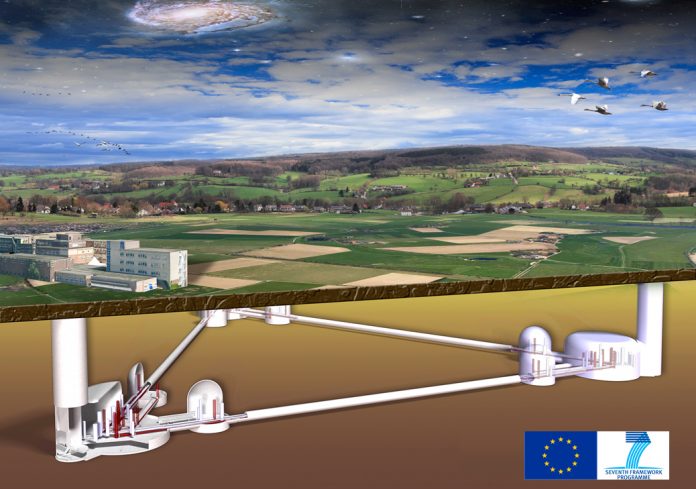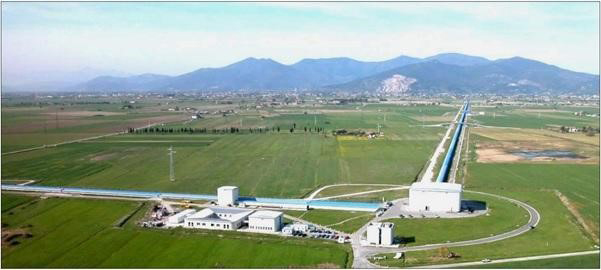
Professor Jo van den Brand at the National Institute for Subatomic Physics (Nikhef) discusses developments in the world of gravitational wave science
Jo van den Brand
Nikhef, PO Box 41882, 1009 DB
Amsterdam, and Maastricht
University,
The Netherlands
E-mail: jo@nikhef.nl
-
Gravitational wave science
Some of the most important open problems in contemporary science are connected to gravitation, such as the origin of the acceleration of the Universe, commonly termed dark energy and the existence of dark matter. Gravitation is the least understood fundamental interaction and in an attempt to answer the many open questions, a large world-wide intellectual activity is ongoing, both on the theoretical front by studying the boundaries between general relativity, quantum field theory, and cosmology, and through experimental activities in astronomy, nuclear, particle, and astroparticle physics.
Gravitational waves are spacetime curvature perturbations and constitute the dynamical part of gravitation. They travel at the speed of light and can be detected when they squeeze and stretch space for example between the mirrors of an interferometer. Gravitational waves represent an ideal information carrier, suffering negligible scattering or attenuation between source and detector. The entire Universe has been transparent for gravitational waves, all the way back to the Big Bang, and they may constitute our only direct window onto the birth of our Universe.
The first detection of gravitational waves was made by the LIGO Scientific and Virgo Collaborations (LVC) and happened on 14 September 2015. The event was named GW150914 and analyses revealed that it resulted from the merger of two stellar mass black holes. Within 0.2 seconds no less than 3 solar masses worth of energy was emitted in gravitational waves, making this the most powerful event ever observed. It constitutes the first direct detection of gravitational waves, and it provided the first direct evidence of the existence of black holes. Moreover, it allowed us to test Einstein’s theory of relativity under the most extreme conditions.
-
The European Virgo Collaboration
The Virgo Collaboration currently consists of about 590 members from 109 institutes in 12 European countries. Besides doing data analysis with LIGO, the Virgo Collaboration has realized Advanced Virgo (see Fig. 1).

The Virgo interferometer joined the two LIGO detectors in 2017. This resulted in much better sky localisation of sources, and allowed us to open the new field of multi-messenger astronomy with gravitational waves. On August 17, 2017, the LVC made the first observation of a binary neutron star merger. This event constituted the closest and most precisely localized gravitational-wave signal yet, and was coincident within 1.7 s with gamma ray burst GRB 170817A. At the same location and over a period of months, electromagnetic counterparts were seen spanning the entire spectrum from radio waves to X-rays. GW170817 allowed the first meaningful contributions of gravitational wave science to both cosmology and nuclear physics. The significance of such results is expected to rapidly increase when the sensitivity of the detectors improves, especially at high frequency.
Virgo started the third science run together with LIGO on April 1, 2019. However due to the COVID-19 pandemic the run was suspended on March 27, 2020 to guarantee the safety of personnel at the observatories. Nevertheless, this run saw a rich scientific harvest with 57 gravitational wave triggers from coalescing binary objects.
-
A roadmap for gravitational wave science
The global network of gravitational wave observatories will soon be expanded by KAGRA, an underground cryogenic interferometer with 3 km long arms, operated in Japan. Moreover, a LIGO-like interferometer that is under construction in India, is expected to join the network in 2025. However, in order to fully exploit the potential of this new science, Einstein Telescope (see Fig. 2) is needed. This new observatory will annually detect up to a million of gravitational waves from binary sources distributed throughout the entire Universe up to times as early as the “dark ages”, the era before the formation of the first stars. Einstein Telescope will enable unprecedented cosmological observations, probe the densest regions of matter, the earliest stages after the Big Bang and the most extreme distortions of spacetime near black holes.
With the political support of five European countries, Belgium, Poland, Spain and The Netherlands, led by Italy, an Einstein Telescope consortium has been formed that consists of about 40 research institutions and universities located in several European countries, including also France, Germany, Hungary, Norway, Switzerland and the United Kingdom. A proposal to realize the Einstein Telescope infrastructure has been submitted to the 2021 update of the roadmap of the European Strategic Forum for Research. Previously, the conceptual design of Einstein Telescope has been supported by a grant of the European Commission.
It is remarkable to envision that in a timespan of only two decades the detection of gravitational waves will go from discovery by the LIGO Virgo Collaboration in 2015 to the realization of Einstein Telescope, an innovative new infrastructure that will bring Europe to the frontline of scientific research, and will ultimately lead to a better understanding of the origin and evolution of the Universe.
Please note: This is a commercial profile










